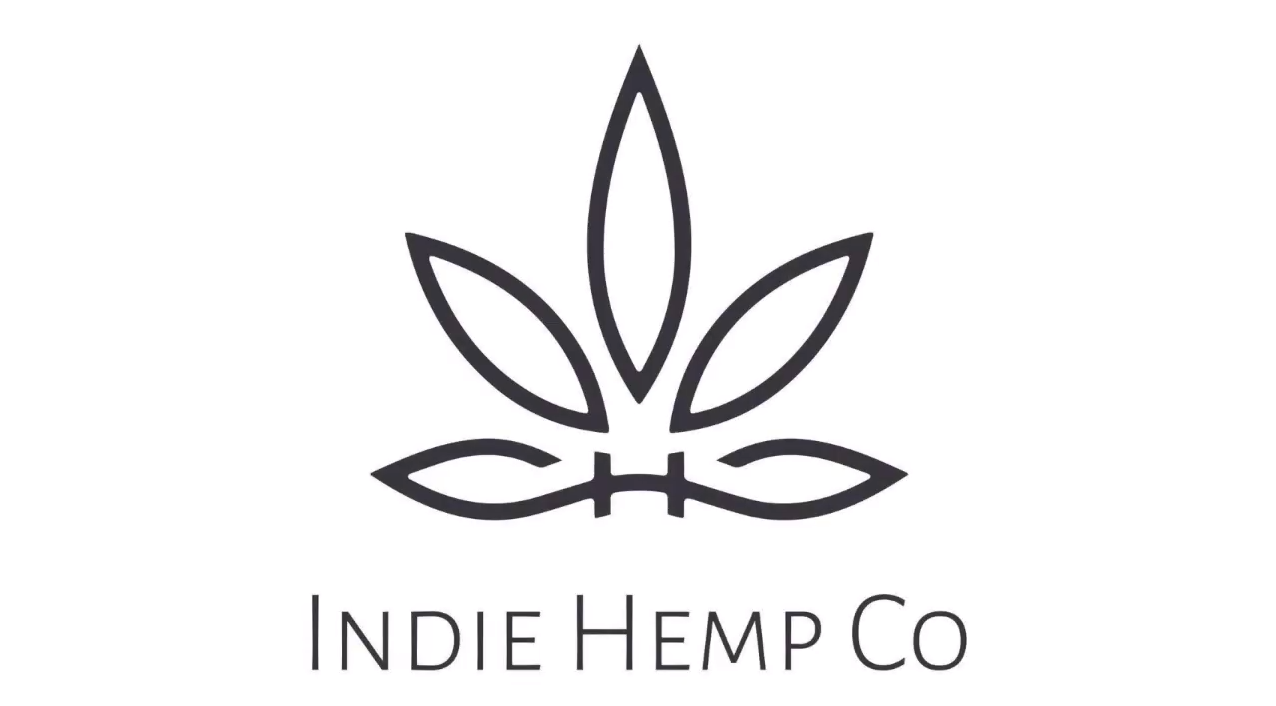
What Are Cannabinoids?
Put simply, cannabinoids are chemicals. More specifically, cannabinoids are chemical compounds that act on the cannabinoid receptors in the brain (CB1 and CB2). There are three distinct classes of cannabinoids:
Phytocannabinoids (found in plants)
Endocannabinoids (found naturally in the body)
Synthetic cannabinoids (manufactured in a lab)
Whether made by plants or by your own body (bet you didn’t know your body did that), cannabinoids are the things that make Hemp the wonder drug that it is. As we’ll see, these chemical compounds that, relieves your pain, and takes the edge off your anxiety. We’ll focus on the phytocannabinoids
ACTIVE CANNABINOIDS
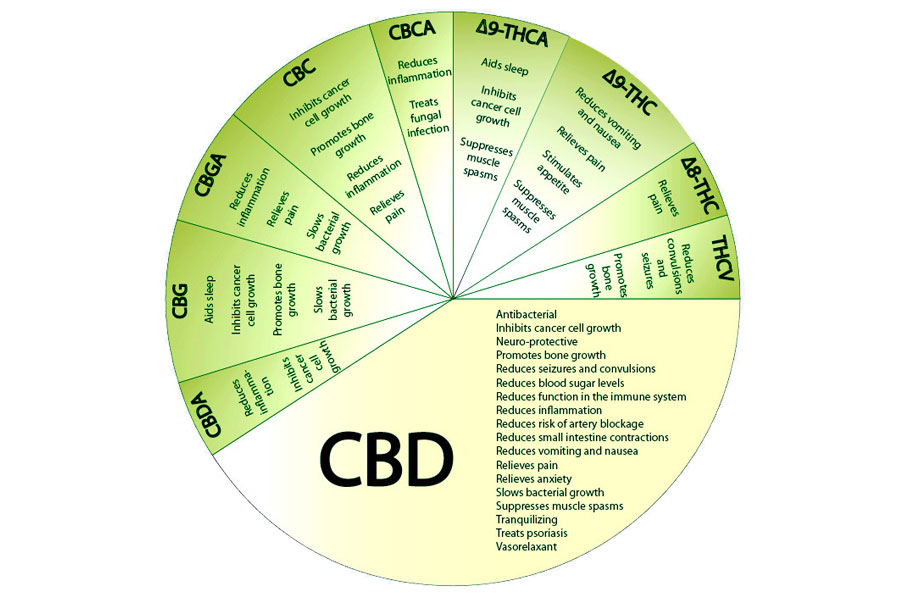
CBD (Cannabidiol)
CBD is probably the second most well-known cannabinoid right behind THC. CBD has actually gained notoriety in recent years thanks to the myriad beneficial medical effects it offers.
First and foremost, CBD is non-psychotropic meaning that, unlike THC, it won’t directly alter your perception, mood, or consciousness. But what it lacks in psychoactive effects, it more than makes up for in medicinal effects. Chief amongst those medicinal effects are:
Pain relief
Inflammation reduction
Nausea reduction
Anxiety relief
Psychosis relief
Seizure/convulsion reduction
Muscle spasm suppression
Blood sugar management
Nervous system degeneration prevention
Psoriasis treatment
Reduces risk of artery blockage
Kills or slows bacterial growth
Inhibits cancerous cell growth
Promotes bone growth
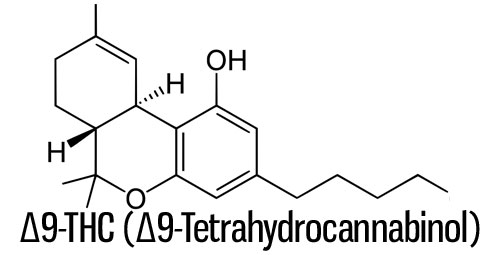
THC (Tetrahydrocannabinol)
Its full name is Delta-9-tetrahydrocannabinol just to make it even more complicated, but everyone just calls it THC. THC is the cannabinoid that has given marijuana its reputation. It’s the chief psychoactive ingredient and is responsible for marijuana’s ability to alter your perception, mood, and consciousness. In addition to its psychoactive properties, THC also:
Relieves pain
Stimulates appetite
Reduces nausea
Suppresses muscle spasms
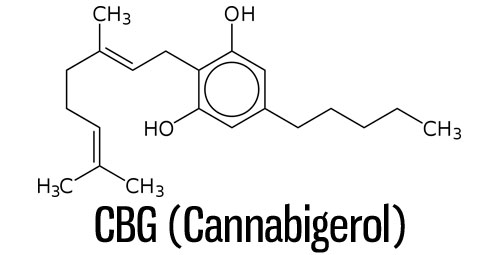
CBG (Cannabigerol)
CBG is a cannabinoid found mainly in hemp products. Cannabis strains grown with THC in mind usually contain only very small amounts of CBG (less than 1%). CBG, like CBD, is a non-psychoactive cannabinoid that won’t get you high. Its importance lies in the fact that it inhibits growth in tumorous or cancerous cells. Other medicinal benefits include:
Pain relief
Inflammation reduction
Bacteria growth inhibition
Treats fungal infection
Promotes bone growth
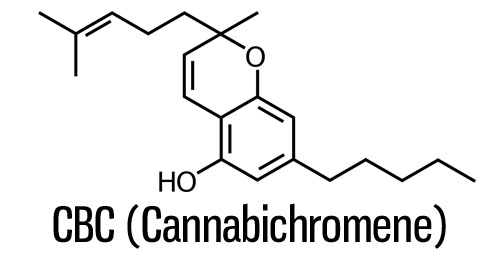
CBC (Cannabichromene)
CBC is a cannabinoid that is most frequently found in cannabis varieties grown in warmer climes (the tropics). That doesn’t mean it’s not present in strains grown closer to the 45th parallel (roughly the Washington/Oregon border), only that levels are basically less than 1%. CBC is non-psychoactive but offers the following medical benefits:
Pain relief
Inflammation reduction
Bacteria growth inhibitor
Bone growth promotion
Cancer-cell growth inhibitor

CBN (Cannabinol)
CBN is found in only trace amounts (basically nil) in live cannabis plants. But when THC begins to degrade (during storage or exposure to light and air), CBN is the result. CBN is only mildly psychoactive (basically nil) but combines with CBD to produce beneficial medical effects, such as:
Pain relief
Muscle spasm suppression
Sleep aid
NON-ACTIVE CANNABINOIDS
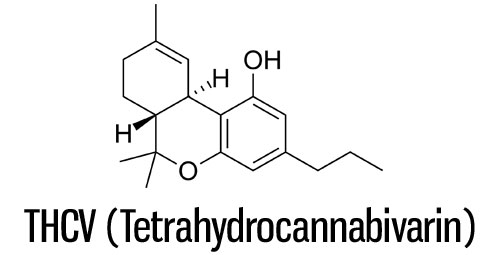
THCV (Tetrahydrocannabivarin)
THCV is very similar to THC in its chemical structure. But that slight difference produces very different effects. THCV is still psychoactive but the high is often described as being a more clear-headed psychedelic effect. Medical effects also differ. They include:
Appetite suppression
Seizure suppression
Blood-sugar level reduction
Bone growth promotion
CBDV (Cannabidivarin)
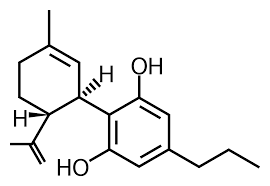
CBDV (Cannabidivarin)
Like THCV is to THC, CBDV is very similar to its chemical sibling CBD. The only difference lies in the shortened side-chain (the zig zags off the right). Only trace amounts of CBDV are found the more common, domesticated strains of cannabis. But relatively high levels have been found in wild strains from northwest India and southeast Nepal.
Like CBD, CBDV is non-psychoactive and is primarily known for its anticonvulsant effects and its use in the management of epilepsy.
ACIDIC (RAW) CANNABINOIDS

CBDA (Cannabidiolic Acid)
If we think of THCA as the parent of THC, CBDA, then, is the parent of CBD. CBDA is the main chemical component in raw cannabis. After harvest, CBDA begins to break down into CBD. This process can be accelerated by decarboxylation. CBDA is non-psychoactive and was once thought to be medically neutral, meaning that it didn’t produce any medical effects. Now, though, CBDA is known for its anti-proliferative effects. This means that CBDA can inhibit cancerous cell growth and keep tumors from spreading. CBDA is also useful for reducing inflammation.
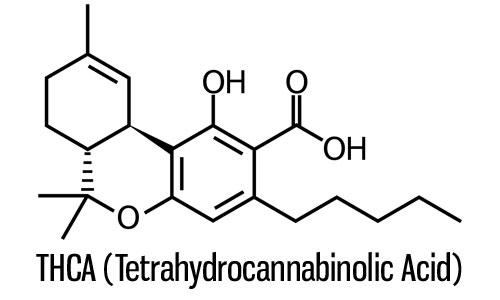
THCA (Tetrahydrocannabinol Acid)
Think of THCA as the parent of THC. THCA is the cannabinoid you’ll most readily find in raw cannabis. After the cannabis plant is harvested, and especially during decarboxylation, THCA converts to the psychoactive THC. THCA also offers a few medical effects including:
Inflammation reduction
Seizure reduction
Cancer cell growth reduction
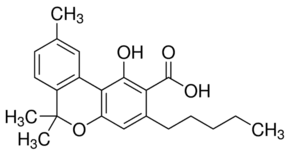
CBCA (Cannabichromenate)
CBCA is produced by CBGA in raw cannabis plants. CBCA then goes on to produce other cannabinoids (CBC, CBL, and CBLA) when heated or aged. Like CBDA and THCA, CBCA is the parent cannabinoid of CBC. Again, once thought to have no medical benefits, CBCA has now been shown to offer anti-fungal and anti-inflammatory effects.
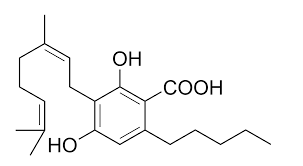
CBGA (Cannabigerolic Acid)
CBGA can be thought of as the stem cell cannabinoid for all the other cannabinoids. Through photosynthesis, cannabis plants produce CBGA. CBGA then becomes THCA, CBDA, and CBCA through various chemical processes within the raw cannabis plant. When harvested cannabis is heated, remaining CBGA converts directly to CBG.
Though CBGA is the building block for everything else within the cannabis plant, it still shows some important medical benefits. It is primarily known for its analgesic (pain relief) and anti-inflammatory properties. Other properties include:
Antibacterial (slows bacterial growth)
Anti-proliferative (inhibits cancer cell growth)
Other Cannabinoids Of Note
Altogether, there are at least 85 naturally-occurring cannabinoids with more being isolated every day. In fact, the Cannabis plant contains over 500 different natural compounds. Those aren’t all cannabinoids but it illustrates the potential that this plant has to revolutionize medicine in this country.
And those are just the phytocannabinoids that occur in plants. Let’s now forget about the endocannabinoids that your body produces. These chemical compounds include AEA (anandamide), 2-AG, noladin ether, NADA, OAE (virodhamine), and LPI (lysophosphatidylinositol). And then there are the synthetic cannabinoids that are produced in the lab. I won’t go into those because we’re sure you’ve had enough big words and strange abbreviations for one day.
